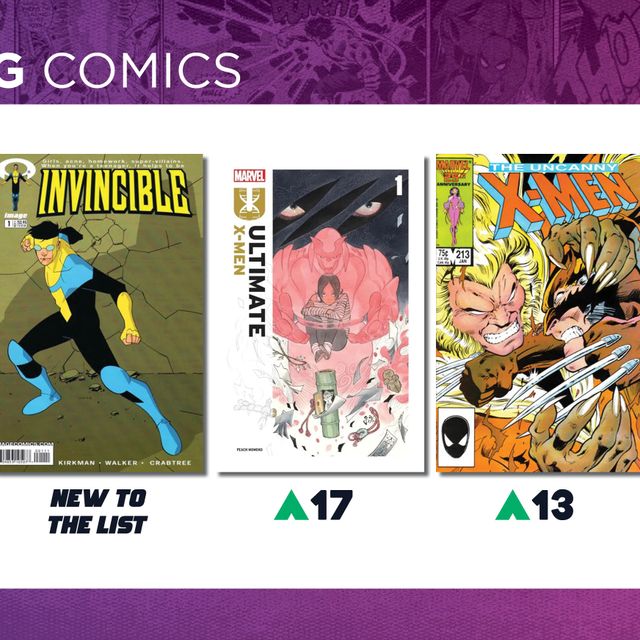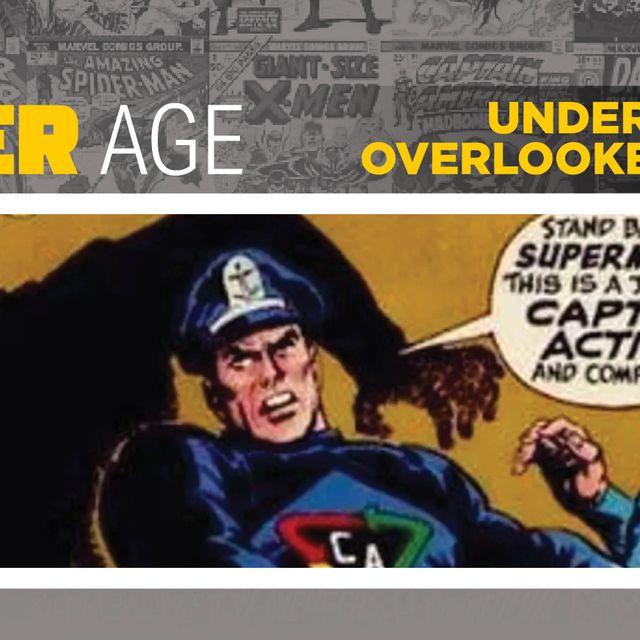 Media Release -- Comic-Con International (Comic-Con), the largest comic book and popular arts event of its kind in the world, has announced that the Eisner Awards judges have selected two individuals to automatically be inducted into the Will Eisner Comic Awards Hall of Fame for 2013. These inductees are Golden Age artist Mort Meskin (Vigilante, Wildcat, Johnny Quick for DC) and the late underground cartoonist Spain Rodriguez (Trashman, Nightmare Alley).
Media Release -- Comic-Con International (Comic-Con), the largest comic book and popular arts event of its kind in the world, has announced that the Eisner Awards judges have selected two individuals to automatically be inducted into the Will Eisner Comic Awards Hall of Fame for 2013. These inductees are Golden Age artist Mort Meskin (Vigilante, Wildcat, Johnny Quick for DC) and the late underground cartoonist Spain Rodriguez (Trashman, Nightmare Alley).
The judges have also chosen 13 nominees from which voters will select 4 to be inducted in the Hall of Fame this summer. These nominees are Marjorie Henderson Buell ("Marge"), Howard Cruse, Lee Falk, Bud Fisher, Bill Griffith, Al Jaffee, Jesse Marsh, Tarpé Mills, Thomas Nast, Gary Panter, Trina Robbins, Joe Sinnott, and Jacques Tardi. More information on the nominees can be found on the Eisner Awards website.
Online voting is now open. To vote, you must be a professional working in the comics or related industries as a creator (writer, artist, cartoonist, colorist, letterer), a publisher or editor, a retailer (comics store owner or manager), a graphic novels librarian, or a comics historian/educator. Eligible voters can visit www.eisnervote.com to register and then select up to four picks in the Hall of Fame category. The deadline for voting is March 4. Further eligibility information is provided on the Eisner Awards page.
The 2013 Eisner Awards judging panel consists of reviewer Michael Cavna ("Comic Riffs," Washington Post), academic/author Charles Hatfield (Cal State Northridge), retailer Adam Healy (Cosmic Monkey, Portland, OR), author/educator Katie Monnin (Teaching Graphic Novels), cartoonist/critic Frank Santoro (Storeyville; TCJ), and Comic-Con International registrar John Smith.
The online voting process is being conducted by Mel Thompson and Associates, the official tabulators of the Eisner Awards. Submissions are currently being accepted in the other Eisner categories; the deadline is March 20. The nominees for these categories will be announced in mid-April.
The Eisner Awards will be presented at a gala awards ceremony to be held on July 19 at the Hilton San Diego Bayfront Hotel.
The Will Eisner Comic Industry Awards are presented under the auspices of Comic-Con International, a nonprofit educational organization dedicated to creating awareness of and appreciation for comics and related popular artforms, primarily through the presentation of conventions and events that celebrate the historic and ongoing contributions of comics to art and culture.
Judges' Choices (will be automatically inducted)
Mort Meskin (1916–1995)
Meskin is best known for his 1940s work at DC, drawing such series as "Vigilante," "Wildcat," "Starman," and "Johnny Quick." Together with Jerry Robinson, he created "Atoman" and "Golden Lad" for Spark Publications; drew "The Fighting Yank" and "Black Terror" for Better Publications/Standard; and did several horror stories for Atlas (Marvel). Through the studio of Jack Kirby and Joe Simon, he produced Boys' Ranch for Harvey and Black Magic for Crestwood Publications, and he is considered a major influence on Kirby and many other artists.
Spain Rodriguez (1940–2012)
Spain was one of the seminal artists in the underground comix movement. In New York, he created the tabloid Zodiac Mindwarp for East Village Other before moving to San Francisco to become part of the counterculture scene there. His character Trashman, Agent of the Sixth International, was an icon in underground newspapers as well as in Zap. More recently, he produced such award-winning graphic novels as Nightmare Alley and Che: A Graphic Biography.
Nominees (4 will be chosen)
Marjorie Henderson Buell ("Marge") (1904–1993)
In 1935 Marge's single-panel gag cartoon "Little Lulu" first appeared in The Saturday Evening Post. Marge continued producing this "silent" cartoon through 1944, and it went on to become a weekly comic strip. Buell stopped drawing Little Lulu in 1947 and the work was continued by others, while she kept creative control. Little Lulu became a successful series of animated cartoons and a popular comic book for Dell/Gold Key (done by other cartoonists, most notably John Stanley).
Howard Cruse (1944– )
Howard Cruse first appeared on the national comics scene with his underground strip Barefootz in 1972. In 1979 he began editing Gay Comix, an anthology featuring comix by openly gay and lesbian cartoonists. In 1983 Cruse introduced his comic strip Wendel to the pages of The Advocate, the national gay newsmagazine, where it appeared regularly until 1989. His 1995 graphic novel Stuck Rubber Baby (published Paradox Press) won Eisner and Harvey Awards and went on to be translated into numerous languages around the world; it was republished by Vertigo in 2010.
Lee Falk (1911–1999)
Lee Falk created Mandrake the Magician as a newspaper strip in 1934 and The Phantom in 1936 and continued to write both series until his death in 1999. The characters have been featured in serials, films, and comic books, and the strips continue today.
Bud Fisher (1885–1954)
Harry Conway "Bud" Fisher created the Mutt and Jeff comic strip in 1907 for the San Francisco Chronicle. Wisely, he had copyrighted the strip himself, and in 1908 he took it to the San Francisco Examiner and King Features. He subsequently moved Mutt and Jeff to Wheeler Syndicate, which gave Fisher 60% of the gross revenue, an enormous income in those times. By 1916, Fisher was earning in excess of $150,000 a year, and by the 1920s, merchandising and growing circulation had increased his income to an estimated $250,000, making him the first big celebrity of comics.
Bill Griffith (1944– )
Known for his non sequitur-spouting character Zippy the Pinhead, Bill Griffith had his first work published in 1969 in the East Village Other and Screw. His first major comic book titles included Tales of Toad and Young Lust, a bestselling series parodying romance comics. He was co-editor of Arcade, The Comics Revue for its seven issue run in the mid-'70s. The first Zippy strip appeared in Real Pulp #1 (Print Mint) in 1970. The strip went weekly in 1976, first in the Berkeley Barb and then syndicated nationally. Today the daily Zippy appears in over 200 newspapers worldwide. There have been over a dozen paperback collections of Griffith's work.
Al Jaffee (1921– )
Al Jaffee is best known as the creator of MAD magazine's fold-ins, which he has been doing since 1964, and for "Snappy Answers to Stupid Questions," a feature that has been collected into over a dozen books. Al is MAD's longest-running contributor, having been there for 57 years. Earlier in his career, Al worked for Stan Lee at Timely, where he was in charge of all humor and teen titles as associate editor. He also worked with Harvey Kurtzman on the short-lived Trump and Humbug humor magazines.
Burroughs, Inc.
Jesse Marsh (1907–1966)
Jesse Marsh is mainly known for his work on the Tarzan the comic book series published by Dell. Marsh penciled, inked, and lettered most of the early issues and continued producing the comic for over 150 issues. Throughout the 1950s he also did work on such series as John Carter of Mars.
Tarpé Mills (1915–1988)
One of the few female artists working during the Golden Age of comics, June Tarpé Mills was the creator of Miss Fury, an action comic strip and comic book that first appeared in 1941. The Miss Fury comic strip ran until 1951. Mills returned briefly in 1971 with "Our Love Story" in Marvel Comics.
Thomas Nast (1840–1902)
Editorial cartoonist Thomas Nast used his Harper's Weekly cartoons to crusade against New York City's political boss William Magear Tweed, and he devised the Tammany tiger for this crusade. He popularized the elephant to symbolize the Republican Party and the donkey as the symbol for the Democratic Party, and he created the "modern" image of Santa Claus.
Gary Panter (1950– )
Painter/cartoonist Gary Panter created the early adventures of his punk/nuclear/hillbilly alter ego, Jimbo, in the late 1970s. In the 1980s he designed the sets and puppets for Pee-wee's Playhouse and maintained an active comics output through his own minicomics and contributions to Raw magazine. In the early 1990s he produced seven issues of a Jimbo comic book. His books include four graphic novels: Jimbo in Purgatory, Jimbo's Inferno, Cola Madness, and Jimbo: Adventures in Paradise (Pantheon).
Trina Robbins (1938– )
A pioneer of the underground comix movement, Trina published the first comic book produced entirely by women, It Ain't Me, Babe. From there she went on to co-found the Wimmin's Comix collective, which helped launch the careers of many other prominent women cartoonists in the underground and alternative field. Her nonfiction books include The Great Women Superheroes and A Century of Women Cartoonists. She has also edited a number of collections of early women cartoonists' reprinted work, including The Brinkley Girls: The Best of Nell Brinkley's Cartoons from 1913-1940 (Fantagraphics) and Tarpé Mills's Miss Fury (IDW).
Joe Sinnott (1926– )
During his 60 years as a Marvel freelancer and then salaried artist working from home, Joe Sinnott inked virtually every major title, with notable runs on Fantastic Four, The Avengers, The Defenders, and Thor. He is considered by many to have been Jack Kirby's definitive inker. Today at 86 he continues to ink The Amazing Spider-Man comic strip.
Jacques Tardi (1946– )
Considered the father of the "new realism" style, French cartoonist Jacques Tardi began his comics career in 1970, with stories for Pilote and later Metal Hurlant. He is best known in the U.S. for his works Adele Blanc-Sec, West Coast Blues, The Arctic Maurauder, Bloody Streets of Paris, and the Eisner Award-winning It Was the War of the Trenches.



